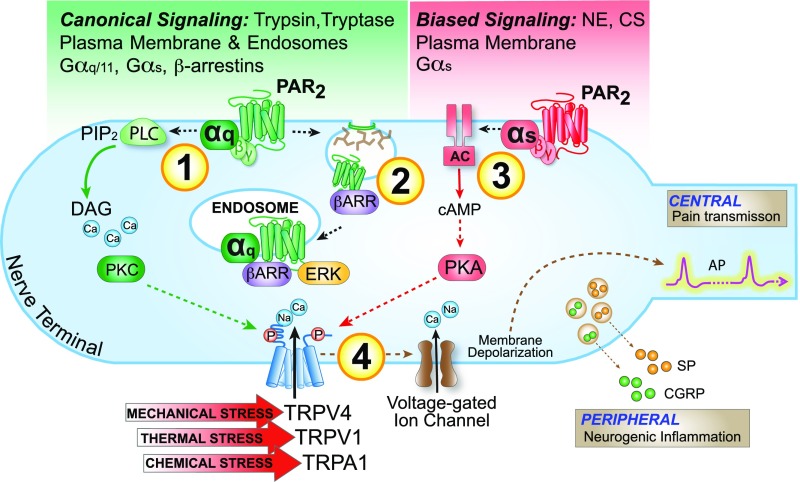Fig. 10.
Mechanisms of protease- and PAR2-induced hyperexcitability of nociceptors. After activation by canonical mechanisms, PAR2 signals at the plasma membrane to activate PKC, which mediates initial hyperexcitability (1). PAR2 then undergoes clathrin-, dynamin-, and βARR-dependent endocytosis (2). PAR2 continues to signal from endosomes by βARR- and Gαq-mediated mechanisms to activate ERK, which mediates persistent hyperexcitability. After activation by biased mechanisms, PAR2 signals from the plasma membrane to activate adenylyl cyclase (AC) and PKA, which mediate the initial and persistent hyperexcitability (3). Kinases may regulate the activity of TRP channels and voltage-gated ion channels, to control nociceptor hyperexcitability (4).

